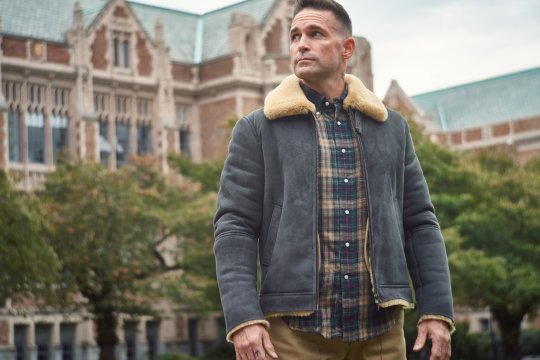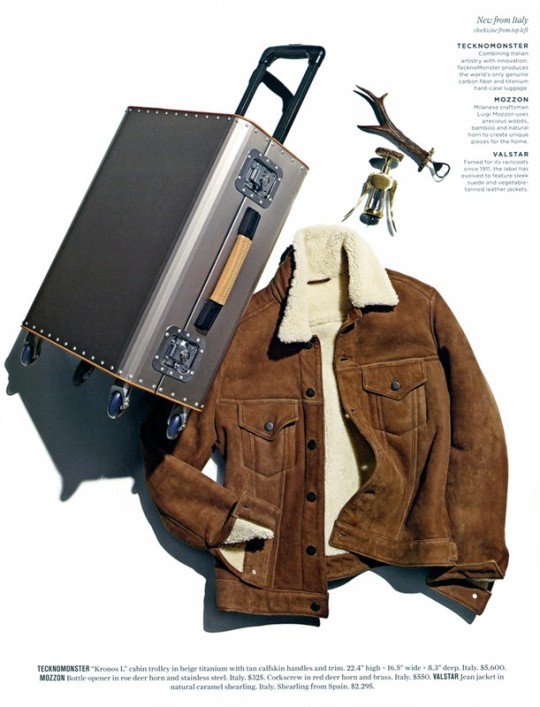 Almost two years after closing his fixed-price Recess and its sister spot, Room Four, chef Greg Hardesty is opening his own space again. Hardesty took to Instagram to announce the pending arrival of Studio C, a “culinary studio” offering coffee, classes, event space, and, well, we’re not sure what else at this point. The posts are very mysterious, but more details are expected soon in a grand-opening announcement. Since closing Recess, Hardesty has worked for Indiana-based Fischer Farms, and is the consulting chef at Spoke & Steele (123 S. Illinois St., 317-737-1616). View this post on Instagram So you may be wondering, what the heck even is a "culinary studio" ? . Well, that's a great question. . A culinary studio is a lot like…View Original Post
Almost two years after closing his fixed-price Recess and its sister spot, Room Four, chef Greg Hardesty is opening his own space again. Hardesty took to Instagram to announce the pending arrival of Studio C, a “culinary studio” offering coffee, classes, event space, and, well, we’re not sure what else at this point. The posts are very mysterious, but more details are expected soon in a grand-opening announcement. Since closing Recess, Hardesty has worked for Indiana-based Fischer Farms, and is the consulting chef at Spoke & Steele (123 S. Illinois St., 317-737-1616). View this post on Instagram So you may be wondering, what the heck even is a "culinary studio" ? . Well, that's a great question. . A culinary studio is a lot like…View Original Post
Jakienle
Shared posts
The Feed: New Directions For Chefs Greg Hardesty And Craig Baker
 Almost two years after closing his fixed-price Recess and its sister spot, Room Four, chef Greg Hardesty is opening his own space again. Hardesty took to Instagram to announce the pending arrival of Studio C, a “culinary studio” offering coffee, classes, event space, and, well, we’re not sure what else at this point. The posts are very mysterious, but more details are expected soon in a grand-opening announcement. Since closing Recess, Hardesty has worked for Indiana-based Fischer Farms, and is the consulting chef at Spoke & Steele (123 S. Illinois St., 317-737-1616). View this post on Instagram So you may be wondering, what the heck even is a "culinary studio" ? . Well, that's a great question. . A culinary studio is a lot like…View Original Post
Almost two years after closing his fixed-price Recess and its sister spot, Room Four, chef Greg Hardesty is opening his own space again. Hardesty took to Instagram to announce the pending arrival of Studio C, a “culinary studio” offering coffee, classes, event space, and, well, we’re not sure what else at this point. The posts are very mysterious, but more details are expected soon in a grand-opening announcement. Since closing Recess, Hardesty has worked for Indiana-based Fischer Farms, and is the consulting chef at Spoke & Steele (123 S. Illinois St., 317-737-1616). View this post on Instagram So you may be wondering, what the heck even is a "culinary studio" ? . Well, that's a great question. . A culinary studio is a lot like…View Original Post
Butcher, brewery team up for retail, lounge combo on College Avenue
Express x NBA Collection
This fall, Express unveiled it’s second multiyear partnership with the NBA called “NBA Game Changers” campaign and includes a Performance Collection as well as an NBA-licensed men’s collection, out now, and women’s collection, out in 2019. Five of the best basketball players were chosen to be the face of this partnership, including Pacer’s Victor Oladipo! This new collection plays off of last year’s giving consumers more of an inside look into the world of basketball, what it takes to be a professional athlete, and how fashion gives players an extra push of confidence.
“This season, expect bigger plays and increased energy as our NBA Game Changers take their game and personal style to the next level in our Performance Collection,” said David Kornberg, Express President and CEO. “We’re also thrilled to offer our customers the opportunity to sport their own personal style and rep their favorite team with our new NBA-licensed collection.”
To get a clear play by play, PATTERN spoke with Jim Hilt, Executive Vice President and Chief Customer Experience Officer at Express. Check out the dunk worthy photos below and shop Express here!

Samantha Ripperger: How did this project start with Express and NBA?
Jim Hilt: We initially partnered with the NBA on our first-ever “NBA Game Changers” campaign ahead of the 2017-2018 season. This is our second iteration of the partnership, which builds on Express’s history of collaborating with inspiring individuals and organizations. Our NBA athlete partners demonstrate the true spirit of what it means to be a Game Changer, both in basketball and in fashion—and we’re excited to see where this season takes us. Additionally, we’re thrilled to expand our marketing partnership with the NBA, which includes a licensed collection debuting in December.
SR: How did Express choose who would be the faces of this second campaign?
JH: We partnered with five NBA athletes who each exemplify the Game Changer persona of being driven, self-starters who have authentic stories of hard work, grit and perseverance. This year’s campaign features NBA All-Star Victor Oladipo of the Indiana Pacers, Mo Bamba of the Orlando Magic and Trae Young of the Atlanta Hawks, two of this year’s top NBA Draft picks, as well as current NBA stars John Collins of the Atlanta Hawks and Jamal Murray of the Denver Nuggets.
The campaign captures the essence of each athlete, what drives him to succeed and how fashion gives him the confidence to take on what’s next in his day and life—whether that’s suiting up in an Express Performance suit for game day or relaxing in jeans on days off.




SR: What factors went into the designs of the Performance Collection?
JH: Our moisture-wicking, stretch Performance Suits, Dress Shirts, Sweaters and Jeans are designed to keep you cool and move with you… whether you’re shooting hoops like our NBA Game Changers, suiting up for a presentation, or dressing up for a night on the town. We want our customers to feel comfortable, confident and ready to take on what’s next while wearing Express Performance.
SR: Did the players get to help design this collection?
JH: While the players didn’t have a hand in the design process, we met with them prior to each photo shoot to learn more about their personal style and what makes them feel confident, from their favorite suits to the colors they’re drawn to. We also asked each player about their game day looks and how their closet has evolved since becoming a professional athlete. Through this, our goal is to bring our customers closer to the game by showcasing merchandise that is authentic to the athletes that inspire them.

SR: What can we expect to see from the Express NBA Licensed Collection? What can we expect to see from the women’s collection dropping next year?
JH: Our NBA-licensed collection will include a robust assortment of men’s apparel from graphic tees to fleece styles, and will expand into additional product categories including blazers, dress shirts, ties and underwear in 2019. We’re also planning to introduce a women’s collection next year as well. The collection will be available in select stores across the U.S., including five stores in the Indianapolis market (College Mall, Greenwood Park Mall, Circle Center Mall, Castleton Square Mall, and Hamilton Town Center) and online at express.com.



SR: As part of the Indianapolis community, we are fans of the Pacers! What what was it like working with Pacers player Victor Oladipo?
JH: Working with Victor Oladipo has been an incredibly collaborative experience. As an NBA All-Star, it’s clear that Victor is driven to succeed, and not to mention has great style, so it’s been a win-win working with him (pun intended!). He shows up to our photo shoots with the same energy and drive you see on the court.
Check out the licensed collection here and the performance suits here.
Amazon’s Silver Lining for the Other 235 Cities

Hudson Yards, under construction
I already wrote a bit here about how cities could have benefitted from the Amazon process even without winning it. I expanded on that theme in an article for the Atlantic, “Cities That Lost Amazon’s HQ2 Contest Can Still End Up Ahead.” Here’s an excerpt:
Oklahoma City is not the only place that’s won for losing. New York City was one of five finalists to host the 2012 Summer Olympics that ultimately went to London. But New York benefitted enormously from that disappointment. To prepare the city for the Olympics, local government proposed several major civic improvements that went forward anyway, including the redevelopment of the Far West Side of Manhattan. This required changes such as rezoning the area for high-rise development and construction of an extension of the 7-train.
Dan Doctoroff, who spearheaded New York’s Olympic bid and served as deputy mayor under Michael Bloomberg, wrote in his book Greater Than Ever, “I don’t think the Hudson yards rezoning, the subway extension, and all the other investment would have happened if the Olympic catalyst and its strict timetable…hadn’t existed.” Doctoroff’s team also focused attention on the East River waterfront, which helped catalyze development in Long Island City. Yes, Long Island City, where Amazon is now locating its New York HQ2. So in a sense there’s a connection between New York losing the 2012 Olympics and winning the HQ2 competition.
The pressures of an Olympics bid created the conditions under which far-sighted leaders could create and push through changes faster than would otherwise have been possible. And guess what? There’s already evidence that the just-concluded HQ2 competition had the same effect.
The process helped local leaders in Indianapolis, one of Amazon’s 20 finalist cities, accelerate changes in their approach to economic development. Michael Huber, CEO of the Greater Indianapolis Chamber of Commerce, told me that “Amazon’s process forced us to throw out the traditional rule book for attracting business investment and talent—traditionally a cost- and incentive-focused process. Their process forced us to think more creatively about human capital and the workforce of the future. We used the Amazon process to add a sense of urgency to the new tools and partnerships (workforce/talent, land use, transit) we are developing as a region.”
Click through to read the whole thing.
Looking for a Shear Thing

When it comes to outerwear, few styles come pre-loaded with as much meaning as a shearling. Not too long ago, the mere mention of it evoked images of the Marlboro Man. Those long, bulky, no-nonsense coats that have patchwork seams running up-and-down the back, and tufts of wool peeking out from beneath the cuffs. The silhouettes are blocky; the leathers often dry and cracked. They make their wearers look like King Kong.
There have been times, however, when shearlings were considerably more luxurious – even if questionable in taste. In the early 1930s, catalog retailers advertised shearling coats alongside suede leather jackets and horsehide outerwear, seemingly unaware of the Great Depression. The material came roaring back in the ‘70s with the Peacock Revolution. Swanky men wore them with chunky turtlenecks and velvet bellbottoms, presumably to their eternal regret years later. They’ve also been part of some important rebel uniforms, including the better side of skinheads (e.g. the non-racist kind) and French zazous (who were an anti-establishment, punk version of French dandies).

Shearlings are back again, and I think it’s due in no small part to the porousness between men’s and women’s fashion. Whereas dressmaking and tailoring used to be two separate trades, designers across the aisle today freely take inspiration from each other. Phoebe Philo, for example, is credited as being a feminist for how she makes women feel comfortable in their own bodies. When she recently stepped down as the Creative Director at Celine, Vanessa Friedman at The New York Times described her clothes as being for the “grown-up woman.”
Ms. Philo was interested not in what would attract the male gaze, but the female gaze (I can’t tell you how many shows I left with male colleagues who were shaking their heads and saying, “I just don’t get it,” while all the women in the audience were making fantasy shopping lists). And even more important: the grown-up female gaze. And in her clothes — deep pile, no-nonsense, swaddling, streamlined — many of them recognized themselves.
Philo never made a menswear collection, but her impact can be felt in many male wardrobes. Stan Smiths? She was one of the first to co-sign them. Vans slip-ons? She helped bring those back with a luxe version of the skate shoes. Birkenstocks and slides? An early endorser. This ugly shoe moment? Her too. Pajamas as daywear? Yes. A loosening of silhouettes? Her style signature.
Similarly, before Balenciaga started churning out the fashion equivalent of Spencer’s gag gifts, the label was one of dreams and beauty. Led by Nicolas Ghesquière, a self-taught designer who took over at the incredibly young age of 25, the label was known for its contrasting silhouettes – slim, high-waisted trousers paired with voluminous coats or rounded jackets (sound familiar?). One of Ghesquière’s more famous pieces is an curly-haired, shearling aviator, which came in dark, moody colors such as slate gray and black. He didn’t invent the design from whole cloth, of course. It’s inspired by the sheepskin jackets American male pilots wore during the Second World War.


Shearlings have been bubbling in the menswear cauldron for a while, but they’ve really come into their own this season (I credit this moment as the tipping point). Mr. Porter even has an entire section dedicated to the style this winter. And while they’re expensive, many aren’t that much more than a normal leather jacket (expect to pay somewhere between $1,000 and $2,000). The real cost is in the maintenance. Since shearlings are closer to fur coats than regular leather jackets, you have to take them to a professional cleaner – a competent specialist who knows how to deal with the material. Expect to pay a couple of hundred bucks per cleaning.
On the upside, shearlings are fairly rugged, even in inclement weather and despite their soft surface. If the jacket gets a little wet, causing spotting or streaking, hang it up to dry in a well-ventilated room and away from direct heat. The next day, brush it out with a soft-bristle brush or dry sponge. Then with a clean cloth, brush it again in the direction of the skin to smooth it out. Darker shearlings will hide soil and stains; rugged designs may even look better with a weathered patina. If you’re really worried about it, you can wear a scarf around your neck to keep the leather from being soiled by your skin.
I like shearlings in more rugged styles – something you can wear with slim jeans and boots, maybe with a textured sweater or even just a t-shirt underneath (the fleece acts as knitwear anyway). Certain designs can also worn with wool trousers for a more contemporary outfit. Some models I’ve been looking at:

Valstar: A classically cut trucker made from a wonderfully spongey shearling. Easy to wear, handsome, and the sort of thing you can throw together with jeans and flannel shirts. I also like how it looks layered over thin, wool turtlenecks. One of my favorites this season. Available at No Man Walks Alone, a sponsor on this site, and Mr. Porter.
James Grose: Another favorite. I’ve been waiting for this model all year and it just dropped at No Man Walks Alone. I usually wear a size 38, but think this might look better slightly oversized (I just bought a size 40). Given that it’s an all-black jacket, I think it’ll look more at home in all-black outfits – black jeans, black boots, and black sweaters. Something different from the usual double riders you see everywhere.
Todd Snyder: Two great styles this season that include a bomber and trucker jacket. I like the cleaner look of Valstar’s trucker design, but appreciate the side-entry hand pockets on Todd Snyder’s version. The bomber jacket, on the other hand, simply looks perfect. It has a generously sized collar, storm guard closure, and adjustable side tabs. The silhouette again looks good without being challenging to wear.
Cromford Leather Company: Cromford of London offers bespoke, made-to-measure, and ready-to-wear leather jackets in slightly more traditional styles (although I think more wearable than Cockpit). My tailor/ coat-maker at Steed thinks Cromford produces some of the best leather jackets around. This season, they made two shearlings for Division Road and The Rake (both sponsors on this site). The first comes in a dark slate gray leather; the second is in a more traditional brown-tan combination. The first can be worn with raw denim jeans for an updated workwear ensemble, while the second might be better for a classic casual look.

The Armoury: A great in-house design by The Armoury that was inspired by a sheepskin Alain Delon wore in the film Once a Thief. Like many of Armoury’s more casual offerings, this one is made so that you can wear it on its own or over tailoring. The collar was made a bit bigger; the body was lengthened to cover a sport coat. I like how it’s presented in The Armoury’s new Upstate lookbook.
RRL: This grizzly jacket isn’t for everyone, but if you’re into heavy denim and engineer boots, nothing else will do.
Joseph: A little more fashion forward, this Joseph jacket is distinguished by its olive green body and white lapels. It’s a little too aggressively fashionable for me, but it could suit the right personality and lifestyle.
Karl Lagerfeld: Forever thoughtful, Karl Lagerfeld was nice enough to design a $300 all-black shearling for your goth baby.
President’s: The cool thing about this “university” shearling is its texture. Not only is it a piece of outerwear, but you can also use it as an absorbent bathmat. If you buy this, you have to use an extra-long bath rug as a scarf (sorry, I don’t make the rules).
Levi’s: Not technically a shearling, but Levi’s sherpa jackets are affordable and lend a similar look. You can also get them second-hand for under $100. If you’re afraid of the denim-on-denim look, try a tan sherpa with blue jeans or a blue sherpa with black jeans. Just note that some of the older designs have really rounded bodies, which may or may not be your thing.



























Soda Pop Design: 7 Clever Architectural Details in Aluminum
Architects: Find the perfect materials for your next project through Architizer. Manufacturers: Sign up now to learn how you can get seen by the world’s top architecture firms.
While it’s long been a part of iconic soda cans, aluminum hasn’t always been a popular material within the built environment. The metal was expensive and generally not harnessed for architectural use until the early 20th century. Use of aluminum in buildings increased in the 1920s, primarily for decorative detailing. In construction applications, aluminum first appeared in roofing, flashing, wall panels and spandrels. The first extensive use of aluminum in construction occurred in the Empire State Building (1930-1932). Parts of the tower structure and spire are built from aluminum, as well as components such as the entrances, elevator doors, ornamental trim and more than 6,000 window spandrels.
As a material, aluminum also possesses an excellent strength-to-weight ratio, meaning aluminum façade systems can be less bulky than those for steel panels. Modern aluminum alloys can also support the weight of heavy glass spans, thus maximizing the building’s capability for using natural sunlight. The metal and its alloys are lightweight, durable, corrosion resistant and infinitely recyclable. Nearly 75 percent of all aluminum produced is still in use today.
Exploring aluminum architecture and its detailing, we’ve gathered a collection of projects that showcase how some of the world’s most innovative architects have utilized aluminum in modern construction projects.


Balancing Barn by MVRDV, Thorington, UK
Aluminum Manufactured by Reynaers Aluminum
Balancing Barn is situated on a beautiful site by a small lake in the English countryside near Thorington in Suffolk. The Barn responds through its architecture and engineering to the site condition and natural setting. The traditional barn shape and reflective metal sheeting take their references from the local building vernacular. In this sense the Balancing Barn aims to live up to its educational goal in re-evaluating the countryside and making modern architecture accessible.
At the midpoint the Barn starts to cantilever over the descending slope, while the structure balances on a central concrete core, with the section that sits on the ground constructed from heavier materials than the cantilevered section. The long sides of the structure are well concealed by trees, offering privacy inside and around the Barn. The exterior is covered in reflective metal sheeting, which, like the pitched roof, takes its references from the local building vernacular and reflects the surrounding nature and changing seasons.



Grace Farms by SANAA, New Canaan, Conn.
Aluminum Rainscreen Roof manufactured by Zahner
Located in New Canaan, Connecticut, the multipurpose building and landscape project was made with Handel Architects to embrace open space for people to experience nature, encounter the arts, pursue justice, foster community and explore faith. SANAA was inspired by the idea of making the architecture a river that’s part of the landscape, an element that doesn’t draw attention to itself. The result is a simple, elegant building that rethinks the relationship between architecture and landscape.
The Grace Farm’s River project floats as a ribbon of glass and steel above the hilly landscape. Working with Zahner, SANAA wanted to give life to the idea of a building that’s part of nature. The structure combines a sanctuary, library, court, commons, and pavilion under an aluminum roof. Featuring a dual curvature panel system, the roof design consists of standard-sized sheets of exterior anodized aluminum. The project uses a light-weight system to achieve the shape with several custom aluminum extrusions that form a channel between the aluminum skins. Here, a floating aluminum plate provides a visual transition between panels.



Mayfair House by Squire and Partners, London, UK
Aluminum Manufactured by Tuchschmid AG
Squire and Partners have completed a private house in Mayfair, London, featuring a striking bespoke leaf facade which mirrors an established Virginia Creeper on a facing building on Curzon Street. Westminster planning committee described the proposal as “striking” and “raising the bar for design within the borough.”
The contemporary interpretation of leaves are crafted as a metallic shingle, which cover a three story elevation and rooftop pavilion. The PPC-coated folded aluminum leaves — 4,080 in total — subtly vary in tones of bronze to mimic organic growth patterns. The concept was designed over a three-year period of research and development working closely with Swiss manufacturer Tuchschmid.

Manetti Shrem Museum by SO – IL and Bohlin Cywinski Jackson, Davis, Cali.
Aluminum Canopy manufactured by Front Inc
The Jan Shrem and Maria Manetti Shrem Museum of Art was designed by SO – IL and Bohlin Cywinski Jackson. Constructed in California’s Central Valley, the Manetti Shrem challenges convention as the first purpose-built museum at UC Davis. The concept was derived as “a patchwork of geometric forms that refers to the agricultural landscape and the vast horizon.” Made to be flexible and integrate with the surrounding site, the design was proposed as a new idea for the museum of the future.
As the signature element of the Manetti Shrem, the 50,000 square-foot “Grand Canopy” of perforated aluminum louvers were manufactured by Front Inc. Supported by 40 steel columns, this graceful canopy features a sloping white wave of custom marine grade aluminum. The permeable roof helps control lighting and shade to create new spaces for informal learning. Front developed the canopy for high light permeability and free spans up to 35ft. The optimized canopy was made with 1/8 inch thick aluminum with up to 40% open perforation area. The result is an integrated, elegant structure of 910 beams with unique offcuts and splice locations.


Essex Crossing by SHoP Architects, New York
Aluminum Manufactured by Walsh Glass & Metal
Fourteen stories of anodized aluminum twist along the façade of SHoP Architects’ mixed-use tower in Manhattan’s Lower East Side. Part of the Essex Crossing development, the building was made with residences in the evolving neighborhood and features some of the most coveted views of the city from all directions. As the building gets taller, it slightly steps back floor by floor. The building tapers to the west and towers to the north.
When the design process began in 2013, the torqued nature of the project became the axis of the overall vision. This was due in part because of the way the champagne-colored metal by New York manufacturer Walsh Glass & Metal could catch the light if properly shaped. When officially complete, Essex Crossing will form a compilation of buildings all featuring different cladding materials and intricate interior layouts. Its faceted metal envelope visually orients the structure upward and outward.



Harbin Opera House by MAD, Harbin, China
Metal Roof Cladding Manufactured by Shenyang Yuanda Enterprise Group
Harbin Opera House was designed by MAD as the focal point of an international competition for Harbin Cultural Island. Responding to the force and spirit of the northern city’s untamed wilderness and cold climate, the building was formed to blend in with the surrounding topography. The opera house emerged as part of a larger master plan and wetland landscape along the Songhua River. The sinuous building stands as a landmark where visitors themselves are imagined as performers. The curving, elegant structure features rehearsal halls, dressing rooms, support spaces and a pair of theaters.
MAD worked with engineers at the Beijing Institute of Architectural Design to develop the steel skeleton supporting the building’s sweeping roofscape. Visitors are encouraged to climb atop the opera house through a series of granite steps set among the building’s metal roof cladding. Visible from the ground, the rooftop terrace invites exploration and opens up to surrounding views of the Songhua river and the city skyline. The exterior cladding was manufactured by Shenyang Yuanda as a series of smooth white aluminum panels that evoke a “poetry of edge and surface, softness and sharpness.”


 Emerson Los Angeles by Morphosis, Los Angeles, Cali.
Emerson Los Angeles by Morphosis, Los Angeles, Cali.
Custom Metal Panel Systems Manufactured by Zahner
Emerson Los Angeles was completed in 2014. Built to define the college’s identity at the center of the entertainment industry in Los Angeles, the building establishes a permanent home for the undergraduate internship program, post-graduate certificate program, and professional study programs. The design brings housing, administrative offices and instructional facilities together on an urban site.
As the most distinctive element of the project, the building features a custom metal panel systems manufactured by Zahner. These screens and panels were made to provide shade and privacy, and are composed of 17 different folded aluminum components. Zahner used 3D models to produce and fabricate the curvatures designed by Morphosis. The eight-story sunscreen was made using computational scripting to determine the final geometry that would shade the internal façades. The dynamic surface was formed through a scripting program that took into account elements like the location of the elm tree in the fifth-floor courtyard and the curvature of the classroom building.
Research Aluminum Manufacturers
Find all your architectural materials through Architizer: Click here to sign up now. Are you a manufacturer looking to connect with architects? Click here.
The post Soda Pop Design: 7 Clever Architectural Details in Aluminum appeared first on Journal.
Harvard Law Grad Who Took Final Exam While In Labor On Life As A Mother
Jakienle#badass
Taxman Brewing to open restaurant/bar in historic downtown building
Black Market Announces New Chef
 Normally, when a well-known and successful chef leaves a restaurant, the gossip train rolls into town. What happened? Who was fighting? Is the restaurant on the ropes? So when word started getting around recently that Micah Frank was stepping away from Black Market, the gastropub he launched in 2011 with business partner Ed Rudisell, the most notable news was the absence of juicy, behind-the-scenes drama. Micah’s tired. Ed understands. They’re still friends. A new chef has already been hired. But to say it’s without drama isn’t to imply it’s without sadness. Frank is a beloved member of the Indianapolis dining scene, a James Beard nominee, and the humble protagonist in the Black Market story. He put bone marrow on a dinner menu when nobody in…View Original Post
Normally, when a well-known and successful chef leaves a restaurant, the gossip train rolls into town. What happened? Who was fighting? Is the restaurant on the ropes? So when word started getting around recently that Micah Frank was stepping away from Black Market, the gastropub he launched in 2011 with business partner Ed Rudisell, the most notable news was the absence of juicy, behind-the-scenes drama. Micah’s tired. Ed understands. They’re still friends. A new chef has already been hired. But to say it’s without drama isn’t to imply it’s without sadness. Frank is a beloved member of the Indianapolis dining scene, a James Beard nominee, and the humble protagonist in the Black Market story. He put bone marrow on a dinner menu when nobody in…View Original Post
Strategies: Netflix’s Audience Is Multiplying. But So Is Its Debt.
Debriefing: Buckeyes Can't Make A Stop, Can't Find the End Zone, Get Stomped by Purdue
This piece is going to look a little bit different than what you are accustomed to. And frankly, it probably should.
There was no offensive player of the game. There was certainly no defensive player of the game. Not many earned a Buckeye Leaf. Jim Tressel probably hated almost every minute of this absolute debacle.
Ohio State is 7-1 heading in to a much needed bye week where they hopefully can address the myriad of problems that are oh so bothersome right now and right them for the stretch run.
Let's debrief.
The Short Story
Ohio State had a lot of things working against them heading into West Lafayette.
1. The Buckeyes were playing Purdue...
2. on the road...
3. at night...
4. in a blackout...
5. right before a bye week...
6. with several injuries...
7. following poor showings in prior weeks.
And, well, these all came to a head last night. Ohio State's offense looked flat from the beginning, the defense, after starting relatively strong, reverted towards what we all know so well, and Ohio State got absolutely curb-stomped by the Fighting Brohms.
Blackout? More like Blacked-Out
As expected, Purdue played like it was their Super Bowl, which isn't that much of a surprise. It seems like that always happens when teams play Ohio State.
But Purdue took risks, all night. We saw a fake field goal that was converted and led to a touchdown. We saw a triple reverse. We saw an attempted flea flicker. Jeff Brohm went for it several times on fourth down.
Purdue fakes the field goal for a first down, then punches it in for a TD. The Boilermakers lead No. 2 Ohio State 14-3 at the half. pic.twitter.com/PpCM1OSJl8
— USA TODAY Sports (@usatodaysports) October 21, 2018
The Boilermakers brought out every trick in the book and Ohio State simply couldn't stop them.
Culmination
In recent weeks, had one been watching the Local Team, he or she may have noticed some glaring weaknesses on both sides of the ball. They came to a head last night.
Rushing Attack (Or Lack Thereof)
Ohio State's rushing YPC had gone down every game this season. Last week against Minnesota, the Buckeyes rushed for just 2.8 yards per carry.
Well guess what: they bucked the trend! Ohio State's rushing average went back up... to 3.2. Which is still bad. You know it's bad when you're throwing a screen pass on 4th down at the 1-yard line.
Bad Defense
We know Ohio State's defense was struggling. I thought this game may end in a shootout. But, I didn't expect the Boilermakers to score 49 points.
I didn't expect David Blough to throw for 378 yards and three touchdowns (with no interceptions) and I certainly didn't expect DJ Knox to rush for 178 yards and another three scores (on 8 YPC).
Obviously, Ohio State was without their best defensive player, who also withdrew from classes and therefore is done in Columbus as a player forever. But that's still not an excuse.
Biggest Question Going Forward
Ohio State still has a lot to play for, of course. With potential chaos looming, as it always does, the opportunity for a playoff spot is still right there for the taking.
Provided the unthinkable doesn't happen and Notre Dame/Clemson both don't win out, there will be some major decisions to make for the College Football Playoff committee once again.
Ohio State will still have an opportunity to defeat Michigan for the seventh time in a row, when the Wolverines come to Columbus on Nov. 24. If Ohio State can win out and then win that game, they will assure themselves a spot in the Big Ten championship game for the second year in a row.
But the question now becomes: how will Ohio State respond? Last year, we saw Ohio State, after the Iowa loss, win out. The Buckeyes steamrolled Michigan State, took care of business against Michigan, and won the Big Ten championship game over Wisconsin.
Despite being denied a playoff spot, the Buckeyes still whipped USC in the Cotton Bowl. This year, will the Buckeyes respond, or will they simply fold and that will be all she wrote for the 2018 season?
A Look Ahead
Ohio State has a much needed week off here where they hopefully can take a strong look at the issues that have plagued them.
The Buckeyes will then play host to Nebraska, who just came off their first win, a shellacking of Minnesota at home.
After that, the Buckeyes travel to East Lansing for a probable slopfest with the Spartans, then go to Maryland, followed by the date against the Michigan Wolverines, who looked good again yesterday.
The Feed: Geraldine’s Supper Club And Blu Pointe Oyster
 Geraldine’s Supper Club (1101 English Ave., 317-600-3336) is now open in Fountain Square. Owner Dan Jarman (of the local Fat Dan’s Deli string of restaurants in Broad Ripple, Carmel, and Mass Ave downtown) named the high-end steakhouse and music lounge after his mother, Geraldine Jarman. Ambrosia Italian Restaurant owner Gino Pizzi is set to re-open his Blu Pointe Oyster concept in the spring of 2019, several years after closing the original location on Westfield Boulevard in the heart of Broad Ripple. The new restaurant will be at 5858 N. College Ave. in the Milhaus Development retail and apartment building. Macaron Bar (425 Mass Ave, 317-762-6443) opened its first Indiana location last week. The Cincinnati-based company launched in 2015, expanding quickly to Louisville and Pittsburgh. https://www.instagram.com/p/Bo9qpIch1WK/…View Original Post
Geraldine’s Supper Club (1101 English Ave., 317-600-3336) is now open in Fountain Square. Owner Dan Jarman (of the local Fat Dan’s Deli string of restaurants in Broad Ripple, Carmel, and Mass Ave downtown) named the high-end steakhouse and music lounge after his mother, Geraldine Jarman. Ambrosia Italian Restaurant owner Gino Pizzi is set to re-open his Blu Pointe Oyster concept in the spring of 2019, several years after closing the original location on Westfield Boulevard in the heart of Broad Ripple. The new restaurant will be at 5858 N. College Ave. in the Milhaus Development retail and apartment building. Macaron Bar (425 Mass Ave, 317-762-6443) opened its first Indiana location last week. The Cincinnati-based company launched in 2015, expanding quickly to Louisville and Pittsburgh. https://www.instagram.com/p/Bo9qpIch1WK/…View Original Post
The Pour: The Sommelier Finds Room to Breathe
Swoon List: The Inferno Room, Tony’s Of Indianapolis, And More
 Fountain Square’s recently opened deli, Turchetti’s Salumeria (1106 Prospect St., 317-426-3048), features an Indiana ham sandwich piled high with corn and calabrian pepper chow chow, shaved onion, and Provel cheese on multigrain bread produced by Rene’s Bakery. The Indiana ham sandwich from Turchetti’s SalumeriaTodd Urban A sensational stack of sweet corn cakes under a deck of avocado, sour cream, and pickled beet relish, with a simple arugula salad and egg, from Café Patachou (multiple Indy-area locations). Cafe Patachou’s sweet corn cakesMegan Fernandez The baked raclette from Tinker Street (402 E. 16th St., 317-925-5000) finds perfectly melted raclette cheese alongside Smoking Goose City Ham, roasted potatoes, honeycrisp apples, cornichons, and toasted slices of baguette. The baked raclette from Tinker StreetJulia Spalding The calamari at Tony’s of…View Original Post
Fountain Square’s recently opened deli, Turchetti’s Salumeria (1106 Prospect St., 317-426-3048), features an Indiana ham sandwich piled high with corn and calabrian pepper chow chow, shaved onion, and Provel cheese on multigrain bread produced by Rene’s Bakery. The Indiana ham sandwich from Turchetti’s SalumeriaTodd Urban A sensational stack of sweet corn cakes under a deck of avocado, sour cream, and pickled beet relish, with a simple arugula salad and egg, from Café Patachou (multiple Indy-area locations). Cafe Patachou’s sweet corn cakesMegan Fernandez The baked raclette from Tinker Street (402 E. 16th St., 317-925-5000) finds perfectly melted raclette cheese alongside Smoking Goose City Ham, roasted potatoes, honeycrisp apples, cornichons, and toasted slices of baguette. The baked raclette from Tinker StreetJulia Spalding The calamari at Tony’s of…View Original Post
Michigan Court Overturns Ban on Wine Retailer Direct Shipping (Wine Spectator)
After two years of legal volleys, lawyers challenging restrictions on wine direct shipping notched an important victory on Sept. 28. A federal judge in Michigan has ruled that the state's prohibition on direct-to-consumer wine shipping from out-of-state retailers is unconstitutional. If the ruling stands, Michigan residents will be able to purchase wine from stores anywhere in the country and have it shipped to their homes.
Robert Epstein, lawyer for Cap n' Cork, an Indiana chain of wine stores and plaintiffs in the case, hopes it is a bellwether for the shipping options of wine lovers across the country. "What has been accomplished is a first step in opening up shipping by retailers around the country to out-of-state clients," Epstein told Wine Spectator.
Lebamoff Enterprises, Inc. et al v. Snyder et al is one of three similar cases undertaken by the Indianapolis-based law firm Epstein, Cohen, Seif & Porter. The other two were filed in Illinois and Missouri. In each, the plaintiffs argue that state bans on out-of-state retailer direct shipping violate the U.S. Constitution's dormant Commerce Clause and Privileges and Immunities Clause.
"For Michigan consumers, it's a big win"
The Lebamoff complaint was filed in the Federal District Court for Eastern Michigan on Jan. 20, 2017, just 11 days after the state's legislature passed a bill allowing in-state retailers to deliver wine, beer and spirits to Michigan residents via common carriers like FedEx and UPS—but blocking out-of-state merchants from doing the same. "The law thus expanded the shipping rights of Michigan retailers while eliminating the shipping rights of out-of-state retailers," summarized Judge Arthur Tarnow, in his opinion granting the plaintiffs' motion for summary judgment.
"The governing question, therefore, is whether Michigan is permitted to enforce a statute that explicitly denies out-of-state retailers a privilege available to their in-state competitors. The answer at this stage must be no," wrote Tarnow.
"For Michigan consumers, it's a big win, because now they have access to nearly every wine that is sold in the United States," said Tom Wark, executive director of the National Association of Wine Retailers, which has supported the plaintiffs' case. If the Michigan legislature now acts to put a system in place for issuing permits to out-of-state retailers and collecting taxes on shipments, "then consumers will win, out-of-state retailers will win, and the state will win, too, because they'll start getting a lot of tax revenue. That's the win-win-win situation."
The Michigan Beer & Wine Wholesalers Association joined the case in support of the existing law blocking out-of-state retailer shipping. "We are disappointed in the ruling," MB&WWA president Spencer Nevins told Wine Spectator via email, "which would allow unregulated and untracked out-of-state retailers to ship alcohol direct to consumers, sapping the state of much-needed tax revenue and undermining small businesses that choose to call Michigan home, including retailers, wineries, breweries and distributors, as well as providing another avenue for underage alcohol abuse."
Potential precedent
Michigan might be the most contentious territory in the direct shipping wars. Along with New York, it was one of two defendants in the 2005 Granholm v. Heald Supreme Court ruling that in-state and out-of-state wineries should have the same shipping privileges from state to state.
But does Granholm apply to retailers? "Michigan … cannot demonstrate that permitting in-state retailers to ship directly to consumers while denying out-of-state retailers the right to do the same is inherent to its three-tier system," wrote Tarnow. "Michigan retains its 21st Amendment powers to maintain a closed three-tier system, just as it remained free after Granholm to prohibit wineries from shipping directly to consumers. But when it starts carving exceptions out of that system, it must do so without resorting to economic protectionism."
In addition to challenging the ban's constitutionality, Epstein presented the wine-buying difficulties he argued that Michigan's system imposed on his clients, Lebamoff Enterprises (the company that owns Cap n' Cork) and Michigan consumers Jack Stride, Jack Schulz and Richard Donovan.
Schulz's fiancée is Greek-American "and his claim was that he can't get a decent supply of Greek wine in Detroit." Epstein contacted a Binny's store in Chicago. "I said, 'Give me a photograph of your Greek wine section,' which was about 75 wines. So I blew that up on a poster, which I brought to court. And the judge said, 'I get it.'"
He also presented a bottle of Domaine de la Romanée-Conti La Tâche 1964 to make his case. "This was a fairly expensive bottle of wine. But the only way you can get a bottle of wine like this would be the Internet or from a specialty retailer," he argued.
What happens now? For the moment, Wark has been advising retailers that direct shipping is back for Michigan residents. "I'm telling them, 'Until Michigan does something [in the courts or legislature], you can ship.' So I would suspect that a number of them will be contacting their former Michigan clients, letting them know that they're open for business."
Supreme fight
Epstein would like to see the Supreme Court hand down an ultimate decision on whether Granholm applies to retailers. He hopes that the state appeals to the Sixth Circuit Court, "and we win." But the state legislature could also ban retailer direct shipping once again, barring it for both in- and out-of-state merchants.
The Illinois case, Lebamoff Enterprises, Inc. et al v. Rauner et al, awaits decision from the Seventh District Court of Appeals, where it was taken up after the plaintiffs' complaint to federal court was dismissed June 8, 2017. The Missouri case, Sarasota Wine Market LLC et al vs. Greitens et al is awaiting a ruling on the defendants' motion to dismiss.
Hanging over all three cases is the announcement last week that the Supreme Court will hear Tennessee Wine & Spirits Retailers Association v. Byrd, a case challenging a different but tangential regulation regarding retailers and interstate commerce. Whether the ruling on Byrd also addresses out-of-state retailer shipping is an open question; even if not, the lower-court cases could be stalled until their judges can observe how Byrd is decided. "Depending on what the Supreme Court does with Byrd, it may or may not control these other cases," said Epstein. "The takeaway is let's wait and see."
Stay on top of important wine stories with Wine Spectator's free Breaking News Alerts.
INDOT says it won't add traffic lanes to north-split interchange after all
Our Review: Liter House
 It takes some linguistic flair to maneuver the schnitzels and spaetzles on the menu at SoBro’s German-accented Liter House. People who can confidently request the frikadellen hamburger or inquire about the blutwurst with an enviable Teutonic twang have an advantage over the unschooled (or someone who short-sightedly chose French as her high school foreign language and can therefore barely order un Orangina). But once correctly pronounced—and delivered on heavy white plates in an equally unfancy dining room of painted concrete-block walls—this far-fetched food seems right at home. In Indiana, of all places. Pork schnitzel over cheese grits and red-eye gravy. That shouldn’t surprise anyone. “Our state food is basically a breaded pork tenderloin,” says Liter House co-owner Eddie Sahm. And you don’t have to be…View Original Post
It takes some linguistic flair to maneuver the schnitzels and spaetzles on the menu at SoBro’s German-accented Liter House. People who can confidently request the frikadellen hamburger or inquire about the blutwurst with an enviable Teutonic twang have an advantage over the unschooled (or someone who short-sightedly chose French as her high school foreign language and can therefore barely order un Orangina). But once correctly pronounced—and delivered on heavy white plates in an equally unfancy dining room of painted concrete-block walls—this far-fetched food seems right at home. In Indiana, of all places. Pork schnitzel over cheese grits and red-eye gravy. That shouldn’t surprise anyone. “Our state food is basically a breaded pork tenderloin,” says Liter House co-owner Eddie Sahm. And you don’t have to be…View Original Post
Where The Driveway Ends, Photographer Dad Sees Hopes And Fears
Greg Miller's new series captures the vulnerability and peace of children as they quietly wait for their bus.
Realty Check: Ladywood Estates
 Tucked just off Emerson and 56th (if you blink, you’ll miss it), Ladywood Estates is a quiet midcentury delight. For many, the Avriel Shull–designed condos need no introduction. Yet for those who’ve just discovered it, it feels like stumbling upon one of Indy’s best-kept secrets. Ladywood has a nomination in the works for the National Register of Historic Places, and home values are surging in the community of 55 condo units. Over the past two years, the median selling price has climbed from $105,000 to $165,000, thanks in part to a new HOA board that is committed to maintaining the distinctive atmosphere and making improvements. An advocate for the neighborhood—and Ladywood resident of 10 years—Fred Mills is passionate about preserving the unique history of the…View Original Post
Tucked just off Emerson and 56th (if you blink, you’ll miss it), Ladywood Estates is a quiet midcentury delight. For many, the Avriel Shull–designed condos need no introduction. Yet for those who’ve just discovered it, it feels like stumbling upon one of Indy’s best-kept secrets. Ladywood has a nomination in the works for the National Register of Historic Places, and home values are surging in the community of 55 condo units. Over the past two years, the median selling price has climbed from $105,000 to $165,000, thanks in part to a new HOA board that is committed to maintaining the distinctive atmosphere and making improvements. An advocate for the neighborhood—and Ladywood resident of 10 years—Fred Mills is passionate about preserving the unique history of the…View Original Post
The Feed: The Inferno Room And Nesso Race To Opening Day
 At long last, restaurateur Ed Rudisell’s Inferno Room (902 Virginia Ave., 317-426-2343) is open for business. Rudisell opened the doors to the tiki lounge in Fountain Square on Tuesday with business partner and bartender Chris Coy serving up exotic drinks and a menu of small plates developed by chef Carlos Salazar of Rook (another restaurant in the Rudisell portfolio, along with Black Market and Siam Square). View this post on Instagram We’ll be officially open on Tuesday night . Photo credit: @h09sier . #tiki #tikiAF #indy #indianapolis #exotica #png #rum #tikidrinks #craftcocktails #cocktails #rhum #midwest #indiana #skulls #InfernoRoom A post shared by The Inferno Room (@theinfernoroom) on Sep 10, 2018 at 5:18am PDT Speaking of Ed Rudisell restaurants, big changes are afoot for Black Market…View Original Post
At long last, restaurateur Ed Rudisell’s Inferno Room (902 Virginia Ave., 317-426-2343) is open for business. Rudisell opened the doors to the tiki lounge in Fountain Square on Tuesday with business partner and bartender Chris Coy serving up exotic drinks and a menu of small plates developed by chef Carlos Salazar of Rook (another restaurant in the Rudisell portfolio, along with Black Market and Siam Square). View this post on Instagram We’ll be officially open on Tuesday night . Photo credit: @h09sier . #tiki #tikiAF #indy #indianapolis #exotica #png #rum #tikidrinks #craftcocktails #cocktails #rhum #midwest #indiana #skulls #InfernoRoom A post shared by The Inferno Room (@theinfernoroom) on Sep 10, 2018 at 5:18am PDT Speaking of Ed Rudisell restaurants, big changes are afoot for Black Market…View Original Post
Once a downtown pioneer, developer Keller returns to residential game
Rum Enthusiasts Have a New Obsession: Fresh-Cut Sugar Cane
Matzo Balls and Chiles? It’s Rosh Hashana With the Flavors of Mexico
Illinois Moves to Staunch Loss of Students to Other States

Foellinger Auditorium at the University of Illinois
I’ve you’ve been following the posts and comments on higher ed here, you know Illinois has become a happy hunting ground for out of state universities seeking students, particularly ones you might not of thought of like the University of Alabama. Schools like Alabama are coming in and offering full ride scholarships to Illinois high school students.
This might partially reflect the difficulty of getting into the state’s flagship school in Champaign. Illinois is a huge state versus the size of U of I. Illinois kids are choosing out of state versus one of the directional schools in state.
Now the state of Illinois is trying to halt this flow through bigger grants at in state schools. The Chicago Tribune reports:
For years, Illinois universities have watched as thousands of the state’s best and brightest students headed elsewhere for college.
Lured by generous scholarship offers, and spooked by the state’s budget stalemate and rising tuitions, Illinois students have increasingly pursued their higher education in other states. Enrollment has slid, and Illinois is losing far more local students to other states than it is attracting nonresidents to attend college here. Now, the University of Illinois and a bipartisan group of lawmakers want to change that.
…
U. of I.’s new program, Illinois Commitment, launches in fall 2019 for freshmen and new transfer students under 24 years old. The program pledges to pay tuition and basic fees for in-state residents accepted to U. of I. and whose family income is $61,000 or less. The family must also have less than $50,000 in assets to be eligible. Posted tuition and fees for in-state students this year are between $16,000 and $21,000, according to U. of I.’s website. Illinois’ truth-in-tuition law requires tuition to remain the same for students for four years.
…
While Illinois invests more heavily in income-based financial aid, state legislators also focused in on merit-based aid — a tool other states have successfully wielded to lure high-achieveing Illinoisans to their institutions. The University of Alabama, for example, has nearly quintupled its merit scholarship pool over the past decade. Illinois students have followed. Alabama awarded 203 full-tuition scholarships, out of 305 total, to freshman Illinoisans in 2017, defraying more than $100,000 in costs per student.In response, lawmakers established the AIM HIGH Grant Pilot Program, a merit-based scholarship program for Illinoisans. Starting in 2019, schools can apply to the Illinois Student Assistance Commission for a share of $25 million, which the schools must match with institutional funds. Universities then may award scholarships covering whatever costs the schools determine for admitted full-time students.
The new program is for U of I, which is already 75% or so in-state students. It’s not clear how that can really go up that much. Helping low-income students may be a worthy goal in its own right, however. It sounds like the merit aid scholarships are for all state institutions.
This is something to monitor as demand for higher ed structurally declines starting in about six years. Other states already smell blood in the water when it comes to a financially weakened Illinois.
Afropunk Brings The 'Black Lives Matter' Ethos Abroad

Afropunk has come of age. In reaching the next phase of its evolution, its efforts have gone global. The music festival has grown to the level of cultural institution.
(Image credit: Melissa Bunni Elian)
Another Look at Venture Capital Concentrations
Noah Smith at Bloomberg has a new column where he provides another look at the geographic distribution of venture capital investing. Here’s his chart of VC deals by market in 2017.

His take:
In 2017, three metro areas — San Francisco, New York and San Jose, California — took about two-thirds of the investment for the top 20 cities. Their share of the top 10 cities has actually increased since 2015, driven in part by super-sized late-stage financing rounds for companies like WeWork Inc., Uber Technologies Inc., and Lyft Inc.
There are a few signs that VC is starting to look beyond the traditional hubs in its quest for returns. In 2015, Bloomberg recorded VC deals in 119 metro areas; by 2017, that number was up to 141. New startup hubs like Columbus and Indianapolis are getting more attention. But more needs to be done to accelerate the spread of venture investment.
…
What can secondary cities do to overcome VC’s caution? Carlson and Chakrabarti’s interviews suggest five main policies. First, cities and their corresponding state governments should invest in upgrading their local universities, in order to produce a pool of talented engineers and managers. In addition, they should encourage local investors to become angels, creating the nucleus of a local investor community. They should improve access for VCs, with good airports and quality hotels. They should boost quality of life with appealing downtowns, while investing in the arts. And perhaps most importantly, they should focus on narrow clusters — such as biotechnology, robotics or agricultural software — instead of trying to become the next Silicon Valley. This latter approach, which has been used by cities like Pittsburgh, not only harnesses clustering effects, but probably helps with marketing as well.
Click through to read the whole thing.
The Feed: Bonna Tavern Serves It Up
 » A sign in the window announces today’s grand opening of Irvington’s long-awaited Chris Baggott project, Bonna Station (128 S. Audubon Rd.). » Turchetti’s Salumeria (1106 Prospect St., 317-426-3048), the full-service deli from butcher George Turkette, is officially open for business in Fountain Square. Social media lit up this past weekend with jealousy-inducing photos of smash burgers, n’duja-topped deviled eggs with pickled mustard seeds, and grab-and-go options directly from Turkette’s on-site kitchen and butchery operation. The deli is open to the public on Fridays and Saturdays only, so plan accordingly. » Celebrity chef and Food Network star Tyler Florence is bringing his new television show to Indianapolis. Florence’s Bite Club premieres nationally on September 6, with the Indianapolis episode airing September 27. Bite Club is a competition with local…View Original Post
» A sign in the window announces today’s grand opening of Irvington’s long-awaited Chris Baggott project, Bonna Station (128 S. Audubon Rd.). » Turchetti’s Salumeria (1106 Prospect St., 317-426-3048), the full-service deli from butcher George Turkette, is officially open for business in Fountain Square. Social media lit up this past weekend with jealousy-inducing photos of smash burgers, n’duja-topped deviled eggs with pickled mustard seeds, and grab-and-go options directly from Turkette’s on-site kitchen and butchery operation. The deli is open to the public on Fridays and Saturdays only, so plan accordingly. » Celebrity chef and Food Network star Tyler Florence is bringing his new television show to Indianapolis. Florence’s Bite Club premieres nationally on September 6, with the Indianapolis episode airing September 27. Bite Club is a competition with local…View Original Post
Introducing Hotel Tango Farms
 Hotel Tango Farm swagAmy Lynch Things just got a whole lot fresher at Hotel Tango Artisan Distillery. Thanks to a new collaboration with Indy Urban Acres, a project of the Indianapolis Parks Foundation, the Fletcher Place–based tasting room now has a direct line to locally grown produce for its “farm-to-glass” cocktails via Hotel Tango Farms. If you’ve recently driven north on I-65 from the south side toward downtown, the Hotel Tango barn signage at the Keystone exit is hard to miss. At first glance, the Rural Street site seems to be an unexpected location for a venture like this, but that’s exactly the point. The sustainable growing operation is reviving this five-acre urban plot by using it to cultivate herbs and vegetables for Hotel Tango’s…View Original Post
Hotel Tango Farm swagAmy Lynch Things just got a whole lot fresher at Hotel Tango Artisan Distillery. Thanks to a new collaboration with Indy Urban Acres, a project of the Indianapolis Parks Foundation, the Fletcher Place–based tasting room now has a direct line to locally grown produce for its “farm-to-glass” cocktails via Hotel Tango Farms. If you’ve recently driven north on I-65 from the south side toward downtown, the Hotel Tango barn signage at the Keystone exit is hard to miss. At first glance, the Rural Street site seems to be an unexpected location for a venture like this, but that’s exactly the point. The sustainable growing operation is reviving this five-acre urban plot by using it to cultivate herbs and vegetables for Hotel Tango’s…View Original Post
The Messy Genius Of Jonathan Brooks

 This article was initially published on August 28, 2018. Jonathan Brooks is a featured chef at Indianapolis Monthly’s Spring Savor event, which runs April 16-19, 2024. Tickets are available online.
This article was initially published on August 28, 2018. Jonathan Brooks is a featured chef at Indianapolis Monthly’s Spring Savor event, which runs April 16-19, 2024. Tickets are available online.
At Beholder on East 10th Street, one day before the grand opening, cooks are charring perfectly good garden vegetables on a hot grill. It can be said: Cucumbers are burning. Their skins are starting to swell from the heat.
Nearby, several new bartenders are in training at the bar in front of three highballs. They note the garnishes and mixes in journals as dim house music plays overhead. On the stove, three pots simmer. Between the bar and the grill station, there’s a four-day old newspaper and a splay of invoices. The house checkbook stands unmanned for a moment, next to a small truck made out of Legos, amidst a forest of wine bottles. An assistant pastry chef paces, looking down into her calculator, then through the pass-through at a workstation populated with cups of macerated raspberries.
Observing all this, Jonathan Brooks—Indy’s 33-year-old superstar chef—moves from one cooking station to the next, pretty much silent. He is an engine of calm, here at the finish of a two-year journey toward opening this restaurant, his highly anticipated dinner place, after the massive success of his brunch destination Milktooth. Brooks is a big guy now, large in his kitchen whites, hulking you might say, having spent many months testing dishes for the opening. “Every night, new entrees, new drinks to try,” he says. “I eat and eat. I don’t care. That’s my job at the moment. I’m a glutton for this place.”
As he cruises his new dining room, set in the shell of a former auto parts shop, he is guided mostly by a sequenced cook timer on his cell phone, set to vibrate. Brooks stands at the grill, leans in, and takes a gander as the sous chef turns things. The cucumbers are really getting black.

In 2014, Jonathan Brooks emerged from obscurity and, alongside his then-wife Ashley Brooks, gave Indianapolis Milktooth, the breakfast/brunch miracle in Fletcher Place. Wasabi pea Dutch baby pancakes. A trademark whitefish salad on challah. Grilled cheese with black-truffle honey topped with a duck’s egg. Chicken thighs with cochigaru sauce, featuring fennel and pickled peppers. These were dishes worth talking about at 11:45 on a hungover Saturday morning.
It was straight butter from there. Local foodies are familiar with the moonshot of his fame. Within a year, Brooks was named a best new chef and featured on the cover of Food & Wine. Conde Nast Traveler included Milktooth on its list of best restaurants in the world. Indianapolis, as featured in stories about Brooks and Milktooth, began being mentioned as a “food destination,” with Milktooth named an “essential restaurant” by Eater’s restaurant editor. In 2015, the city even held a Milktooth Day to commemorate Brooks, his food, and the apparent shift in national perception of the city.
Brooks stood tall as a proponent of Indiana-sourced foods, too. “I grew up here. My formative years were here,” he says. “And when I left for Montana, I never planned to move back. But when I did, I was blown away by the agriculture muscle of the place, and the cool produce available here.” He then lists from memory the farms, proprietors, and distributors who fill the larder at Milktooth every morning. He offers phone numbers.
Brooks shares the spotlight reflexively. He sincerely wants people to take a look for themselves at what he’s found here. He is an open champion of food offerings in Indiana, often written off for the rows of soy beans and feed corn in its fields. Brooks has overturned that perception. He did the leg work before opening Milktooth. He knows what’s out there. It revs him up to list it from memory, like a Gatling gun.
For Brooks, the pleasure of cooking lies in the assemblage of arcane hunches and wild hairs of memory. Or maybe it’s just eating. The man eats. “When we were putting the menu together, [sommelier] Josh Mazanowski and I sat around and tried everything we could think of,” he says. “Linking wines to tastes, and to the smells of food. Then we linked ingredients for our own pleasure. We crossed stuff. And re-crossed.”
“I’m not the type of chef who shoots for perfect food,” he says. “I don’t write recipes down. I like a little chaos in my eating.”
Asked how many of these experiments will make the menu at Beholder, Brooks is circumspect. “Not many,” he says. “A small percentage. We ate a lot in order to offer what we have here. And just stayed in, eating and drinking.” He slaps his hand against his chest, somewhere above his stomach, over his heart maybe. “It doesn’t matter. That’s the job.”
Situated on East 10th Street, Beholder almost certainly will accelerate the restoration of what was recently a fringe neighborhood. His reasons for the location? “Mostly we just found a landlord who was willing to let us work with the space,” he says. “We didn’t hire a designer. We pulled it together ourselves, using our own ideas, our own palette.”
So they had no sense of betting on the location? He shrugs a little. “It’s close to Milktooth,” he says, downplaying the significance of rebuilding a vacant commercial structure in a neighborhood which needs that sort of help. “And I live near here. I can ride my bike. And it’s easier to see my son when I can.”
But he is betting on what he can do with dinner, with wine pairings, crafted small plates, bowls shared around festive and intimate tables. It’s a cozy, elegant layout stretching across the still perceivable auto bays, from the child-friendly pink room near the entrance, through the bar and open grill, toward candle-lit dining at the far end. The opening-week menu would feature pig-skin pad-thai with kohlrabi, smoked dried shrimp, tofu, and peanuts; pan-roasted skate wings, with potato-skin aioli and fresh green curry sauce; and, of course, the infamous grilled cucumber, with the pricey option to add caviar and clotted cream.
“Food is a sensual thing,” Brooks says. “And I want people sharing bowls, reaching for bites, feeding one another. Just treating the food like something to touch as well as taste.” His plates are little experiments, different every night. “I’m not the type of chef who shoots for perfect food,” he says. “I don’t write recipes down. I like a little chaos in my eating.”
Chefs, they know things. Obscure stews from Puerto Rico. Techniques for grilling fish in a tent by a river. The way to treat a duck egg in a copper pan. Trained in the star chamber of cramped kitchens on the edges of European cities, they come back to us armed with hard-won formulations about what may be the single constant in the lives of every human on the planet: food. On television, through a pass-through, splayed across the pages of a magazine, they shout, rattle pans over blue flame, urge others toward their vision of the possibility of a meal, a bite, a spoonful of soup. The theatrics of the kitchen are legend—the shouting, the lectures and cajoling, the jokes and threats. All that piles up. Late nights, early mornings, long weeks, years even. Cooking sometimes looks like just another shitty, stressful job. When you’re young, you can burn a night in the grill light of your own enthusiasm. When you’ve been in the business for a decade, you sometimes feel all you’ve burned recently is bridges.
For whatever reason, few of the local chefs contacted for this article wanted to talk about Brooks. Two actively refused. One ignored every inquiry. Why wouldn’t they be eager to do a little windup on what Brooks brings to the table?
“I think a lot of it, early on, was jealousy and resentment,” says Greg Hardesty, former head chef and owner of the now-shuttered restaurant Recess, where Brooks served as chef de cuisine. Hardesty, who retired from the restaurant business last year, is often referred to as Brooks’s mentor. “He was just a friend of the sous chef who came in and talked to me one day,” he says. “And at Recess, we really needed his energy and momentum. You saw that in the rise of Milktooth. I was happy for him—the magazine covers, that piece in Food & Wine. But even I felt a twinge of envy, a little sense of Why couldn’t that have happened to me? It’s only natural. There are people doing good work all over this city. A lot of it has to be right place, right time.”
So why did Brooks find fame when others didn’t? Maybe luck had something to do it. But Hardesty suspects there was something more, too. “Jonathan is very well read,” he says. “When he worked for me, he was constantly thinking back to some soup he ate in the back of a store somewhere, or some recipe he found in an out-of-print cookbook. That kind of thing matters.”
Before starting Recess, Hardesty owned the downtown restaurant Elements, which was a hot ticket for a long time. So he knows something about trying to replicate a hit. When asked if he thinks Beholder will take a toll on Brooks, he seems to worry.
“I do think he desperately wants to do it again,” he says. “But it’s really a lousy way to make a living. It’s one thing when you’re in your 20s, and everyone you’re hiring is, too, and you work all night long, and you count on each other. It’s something else when you’re in your mid-30s, with every aspect of life pulling at you, and you start to feel you can’t count on a generation that hasn’t lived through all of this yet. That second go round, it can be a real bitch.”

On my way to Beholder one afternoon, I had—of all things—a lousy chicken-fried steak in Avon. “It was gummy,” I tell Brooks. “Can you fix a bad chicken-fried steak?”
Brooks is too smart to hazard guesses about other people’s cooking without trying it first. But he sees things worth borrowing in much of what he eats. “When you’ve been cooking as long as I have, 90 percent of the time, a problem is very, very obvious,” he says. “So you take an idea that almost works, and take it back to your restaurant to make it work. Lean on your ingredients. I’m an experimenter. A fixer. I’ll change things up anytime. You have to learn as you go.”
Asked for an example from the new menu, he demurs. Brooks is never willing to give away specifics. And I’m not a fool. I’m not going to play foodie Jeopardy! and recite one of his beautifully elaborate combinations. There’s no pleasure in giving Brooks his own answer.
“You know what I mean,” I say. After I wait out his pause, Brooks reaches down into a little steel pan on the counter and under the sheet of plastic wrap. He selects a single green from a larger pile, and holds it up. It’s about an inch long, a little stick that looks a lot like a tiny piece of bamboo. “That’s a sea bean,” he says. He motions for me to take one. “They’re a form of seaweed. Salty, crunchy.” He chews and thinks.
I do, too. “Tart,” I say. “Good!”
“I know, right?” says another chef from the far corner of the kitchen. He walks over and eats one. I can’t get over it. How did I not know about sea beans? So salty, so crunchy.
He ate them in some far-off market. “My job is to bring things back, and start playing,” Brooks says. “To use ingredients in new ways.”
Ok, Alex: What is squid boudin with squid ink sausage, sweet carmelized corn, and—wait for it—sea beans? That one’s from Beholder’s opening-night menu.
After a moment, Brooks sets two large white vegetables on their end, side by side. Two fleshy cylinders, like, well, phalluses. “True Normandy red asparagus,” he says. “These are the real deal. Very few restaurants use these. They grow entirely underground. Once these start sprouting, they knock up these little piles of dirt from below.” Chef, he knows things.
Talent for one. Brooks partnered in the venture of Beholder with Mazanowski, the sommelier from Recess, whom he met while working there. He coaxed pastry chef Pete Schmutte from Cerulean. He lauds his kitchen staff, also hand selected. “The really great thing about cooking is the teamwork, the fact that five talented people can really grow things for you in here.”
Members of the Beholder staff showed up before there even was a kitchen. “These guys have been coming in for weeks, working without clocking in,” he says. “They’ve been painting the walls, pulling out carpets. To run a good kitchen, you really need a group of people that will stay utterly loyal to one another.” Then, suddenly, he holds his hands out, beatific, indicating the kitchen around him and the people he has chosen. “Now,” Brooks says, “they are here and we are ready.”
“That’s what we came for,” says a tattooed guy, another chef, giving an upnod to Brooks. And it’s the truth. Here’s this guy in a kitchen, doing the most routine prep work there is, slicing scallions into absurdly accurate rings of green, so the bowl full of them looks like a little heap of jewelry. Brooks looks into the bowl. “You know I’ve worked in restaurants where all the vegetables were proportioned into little bags, which the cooks would drop into boiling water, and walk away,” he says. “It’s like there’s no risk to the process. I hate that. I want the process to matter as much as the product.”

Later, in the dining room, Brooks stands with a sous chef and seasons something bubbling in a large stockpot. He faces her and drops in a pinch of an ingredient, something red and proprietary enough that he won’t tell me what it is when I ask as he returns to the table in the center of everything. Does he expect Beholder to follow the same arc of success as Milktooth? Brooks gives a blank look. “You have certain hopes, you know,” he says. “Just maybe not the same hopes as the first time.” He’s willing to reflect on what he may have lost on that trip. “There’s a cost. I’ve lost a lot to drinking, to late nights. I’ve been divorced twice. There’s a lot of my family I haven’t seen that much. You know, I only see my son two or three times a week. It’s never not tough.”
But there are, he notes, a lot of people counting on Beholder. He will give the job what it takes. “This cooking thing is not going anywhere for me,” he says. “It’s the only thing I know how to do. I can’t close the restaurant and go make money some other way.”
Brooks doesn’t like to categorize his cooking. He has called himself an “emotional cook” on various occasions, which at first seems evasive. “Food itself is emotional,” he explains.
Just then, a couple of teenagers enter the restaurant. They plop down in the chairs directly next to Brooks, not seeming to know who he is. The big dog, I want to say. The boss man. Jonathan Brooks!
“These guys are going to be bussing tables,” Brooks tells me. “They’re in for training.” The kids hold out their hands for a shake, and introduce themselves.
“How did you land this job?” I ask, figuring them to be neighborhood kids.
“This is my niece and nephew,” Brooks says. They shrug appreciatively.
“You’re bringing them into the business then?” I ask.
“My family has always supported me,” he says. “My mother and sister were hanging wallpaper over there. They were in washing dishes during our last test menu dinner. My family is already way in.”
“Does he give you advice?” I ask the kids. There’s a pause.
“Do you?” the girl asks Brooks, raising an eyebrow.
“Never stop eating,” he says before he gets up to start working again. There are experiments ahead. And cucumbers nearby that need to be burned.
Illustration by Flatland Kitchen
The post The Messy Genius Of Jonathan Brooks appeared first on Indianapolis Monthly.


















